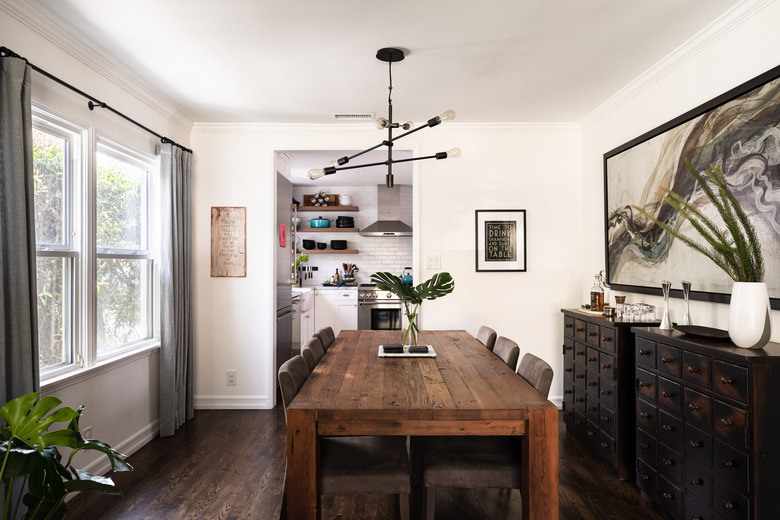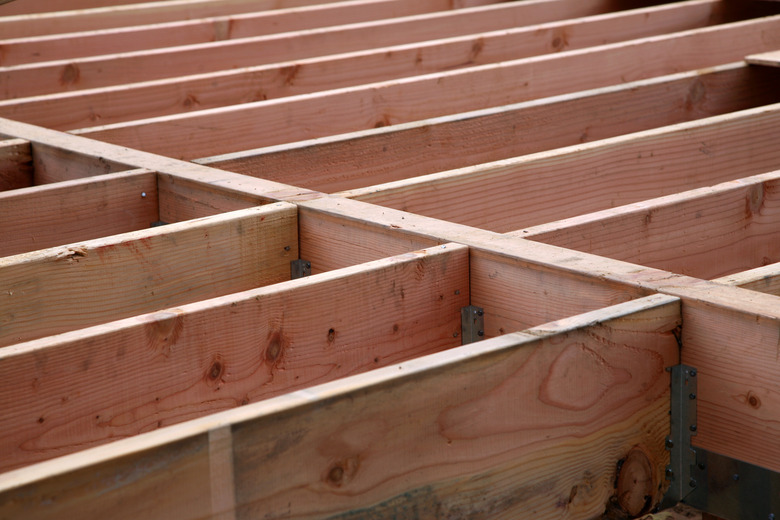Floor Joist Repair: A How-To Guide
If your floor starts to sag and creak, it's likely that you have a floor joist or two that needs repairing. Sometimes, however, the signs of deteriorating or damaged floor joists are more subtle. In addition to sagging, damaged floor joists can cause cracks in your drywall and may prevent doors from staying open or properly closing.
Repairing a single joist by reinforcing it is not a complicated project, but it's best suited for someone with at least a basic set of carpentry skills. It's important to keep in mind that floor joists serve as a critical part of your home's structure. There is no shame in calling a savvy friend or professional contractor for help if you're feeling a little unsure of yourself or if you are new to DIY projects.
Checking Things Over
Checking Things Over
The easiest way to verify floor joist problems is to go into your basement or crawl space and take a look. Most joist problems are easy to spot. Sometimes, the weight of your floor simply makes the joists sag over time. If you're not sure if your joists are sagging, check them by running a string tightly along the joist. If your string is fastened 2 inches from the top of the joist at each end, then it should measure 2 inches from the top at every point along the joist. If it doesn't, the joist isn't level. While you're measuring, use a flashlight to inspect your joists for visible cracks in need of repair.
If you've noticed a saggy or creaky area on your floor, check the joists underneath for electrical wires or plumbing running through the joists. Even when properly placed, cuts in your floor joists made to accommodate other building elements may weaken your joists a bit. It's not uncommon for plumbers, electricians or HVAC contractors (not to mention homeowners) to cut more out of joists than they should, leaving the joists vulnerable to structural failure.
When to Say When
When to Say When
Floor joists are an important part of your home's structure, and messing with them too much can cause structural problems. As such, it's important to know when to call a professional for help. If you find mildew, mold or water damage on your joists, call a plumber to find and repair any leaks you have before attempting a joist repair. The same holds true if you see termite tunnels, sawdust piles or other signs of insect activity. Have an exterminator solve the insect problem before fixing your joists.
You'll also want backup if you see that the vertical support posts under your floor joists are sitting directly on the ground or on small concrete footers. Both of these arrangements cause support beams to rot, and you may need to repair more than just your joists. Repairing joists on the second or third story of your home means disturbing a floor or ceiling, so many homeowners opt to hire a handyman or contractor for these jobs as well. Others call for help if fixing floor joists requires working in a tight crawl space.
Consider how many of your joists need repair. While you can certainly DIY a few, you may want to call in a professional if the majority or all of your joists seem to need repairing. According to CostHelper, hiring a contractor to repair floor joists in 2019 costs an average of $100 to $300 per joist. A small room can be repaired for $1,000 to $3,000.
Fixing Floor Joists
Fixing Floor Joists
If a single joist is cracked or otherwise damaged or if multiple joists are undersized for their weight load but are in good shape overall, you can often fix them using a process called sistering.
The first step is to jack up the floor frame from below using a floor jack and a temporary beam placed across the damaged joist and two or more neighboring joists. The jack lifts the beam, which raises the joists until the floor is level. If the sag in the floor is extreme, this must be done very slowly — only about 1/8 of an inch per month — so as not to cause structural damage or cosmetic problems like cracks in the walls above.
With the jack in place, a full-length sister joist is slipped into the cavity between the damaged joist and its closest neighbor. The new joist usually has to go in on its side so it can fit into the cavity. Construction adhesive is applied to the side of the old joist, and the new joist is stood upright and moved flush against the old joist, usually with a lot of hammer blows.
Finally, the joists are clamped together while the new joist is nailed to the old. Nailing typically includes driving three 16d nails every 16 inches through the sister joist and into the old joist. The nails are placed at the top, middle and bottom of the joist at every nailing point.
Making the Cut
Making the Cut
If the joist on which you're working was cut to allow for wiring or plumbing, you'll need to cut your sister joist too. This also usually means that you'll need to disconnect the pipe or wiring so you can feed it through the holes or notches in the sister joist. It's imperative that you cut the joist properly, and this is where things can get technical.
According to Old House Journal, notches placed at the end of a joist may not exceed 1/4 of the joist's total depth. Other notches cannot exceed 1/6 of the joist's total depth (the top-to-bottom dimension), and no notches should be cut in the center third of the joist's length. Circular holes cut into the joist should be at least 2 inches away from both the top and bottom edges, and holes should be no larger than 1/3 the depth of the joist. Likewise, the maximum length of notches is 1/3 the joist depth.
Failing to follow these rules could weaken your floor joists and may put you afoul of local building codes. If sistering your existing joist will require you to violate any of these guidelines, it's best to stop and call a structural engineer for advice. You are making a structural repair when fixing a floor joist, so you need to do things properly. A consultation with a structural engineer will likely cost you around $300 to $500 and is well worth the cost.
Joist Repair Tips
Joist Repair Tips
When repairing a joist, the sister joists must be flush to the bottom of the subfloor and aligned with the other joists in order to do their jobs properly. If it's difficult to drive nails into a joist, the sister joist can be anchored to the old joist with 3/8 x 3-inch lag screws driven into pilot holes.
If you decide you want professional help, a general contractor should have no problem getting the job done. As always, ask your friends for recommendations and look online for reviews before hiring anyone. Get about three estimates and ask each contractor to provide recent references. Although you never want to pay more than necessary, always remember that an estimate that seems too good to be true probably is.

